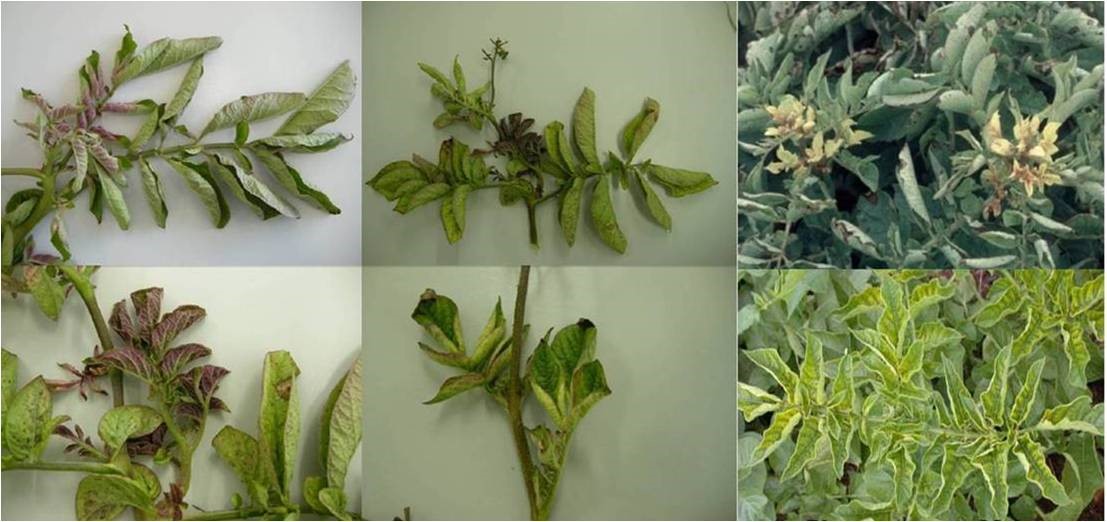
Fig.1. Shoots of zebra chip affected potato plants infected with Ca. Liberibacter solanacearum. Leaves on younger shoots display purpling, and older leaves are chlorotic. The leaves are also rolled. (Photos courtesy: Dr. Lia Liefting).
Dr. Binoy Babu, Dr. Nicholas Dufault, Dr. Mathews Paret, and Dr. Carrie Harmon
During the 2000 growing season in Texas, a new bacterial species ‘Candidatus Liberibacter solanacearum’ was observed in the U.S. This pathogen can cause serious diseases on potatoes, tomatoes, and other solanaceous crops or plants. In particular, it was found associated with zebra chip in potatoes and psyllid yellows in tomatoes and peppers, causing significant economic losses (50% or greater), by reducing both yield quantity and quality. Ca. L. solanacearum has also been detected in several solanaceous weeds with psyllid yellows symptoms including Solanum ptychanthum (black nightshade), Solanum elaeagnifolium (silver leaf nightshade) and Lycium barbarum (wolfberry). In the U.S. the Ca. Liberibacter solanacearum has been reported to occur in the western and central regions including Texas, Nebraska, Colorado, Kansas, Wyoming, New Mexico, Arizona, Nevada, California, Idaho, Oregon, and Washington. However, the disease has not been reported in Florida or any other state east of the Mississippi river.
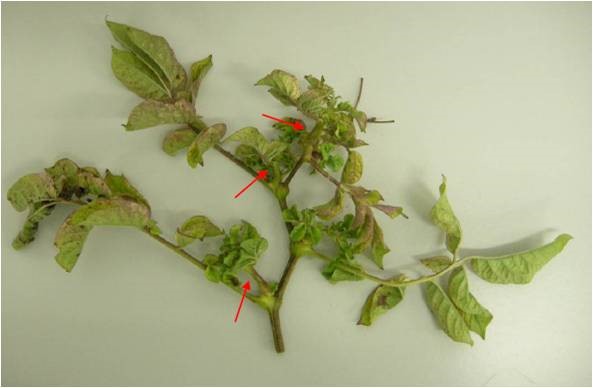
Fig.2. Shoots of a zebra chip affected potato plant infected with Ca. Liberibacter solanacearum. The shoots are stunted and swollen (arrows) and swelling is occurring at the nodes. (Photo courtesy: Dr. Lia Liefting).
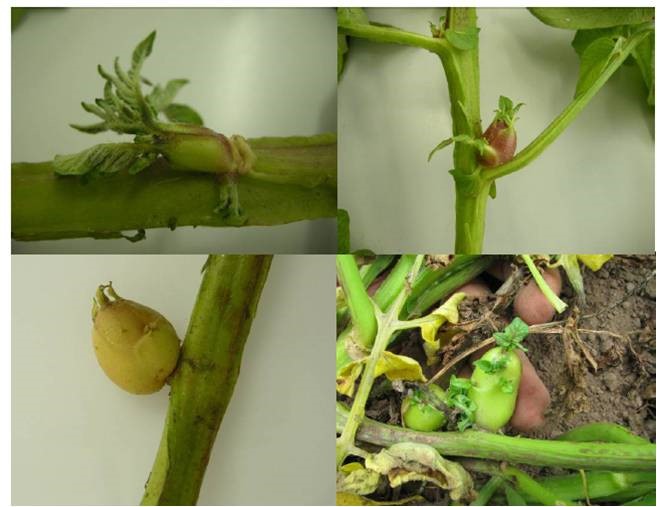
Fig.3. Aerial tuber formation on zebra chip affected potato plant infected with Candidatus Liberibacter solanacearum. (Photo courtesy: Dr. Lia Liefting)
Common symptoms of Zebra chip disease includes yellowing or purpling of leaves and shoots, and curling of leaves (Fig.1), stunted shoots with shortened and swollen internodes (Fig.2), aerial tuber formation (Fig.3), early senescence, and tubers may have enlarged lenticels, brown purplish stolons, necrotic flecking of the vascular tissue and streaks along the medullary rays that are enhanced when slices of the potatoes are fried. (Fig.4)
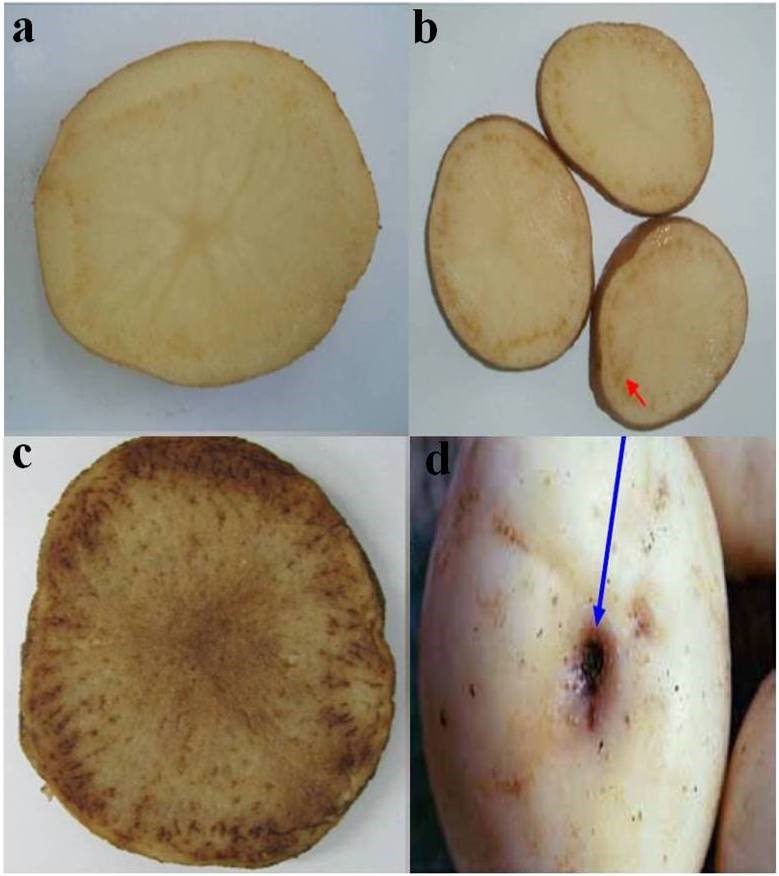
Fig.4. Fresh tuber slices of zebra chip affected potato plants infected with Ca. Liberibacter solanacearum. The images show mild (a), moderate (b) and (c) severe discoloration and flecking of the vascular tissue and streaking of the medullary rays of tuber slices after frying and (d) brown to pinkish collapsed stolons. (Photo courtesy: Dr. Lia Liefting (a,b,c) and Munyaneza (d)).
Symptoms associated with Ca. Liberibacter solanacearum in tomato include stunting (Fig.5), spiky and chlorotic apical growth (Fig.5 & 6) and leaflets may be distorted, curled or chlorotic (Figure 5, 6 & 8). The plants may also exhibit purpling of the mid vein and leaves (Fig.9) as well as deformed fruits (Fig.7).
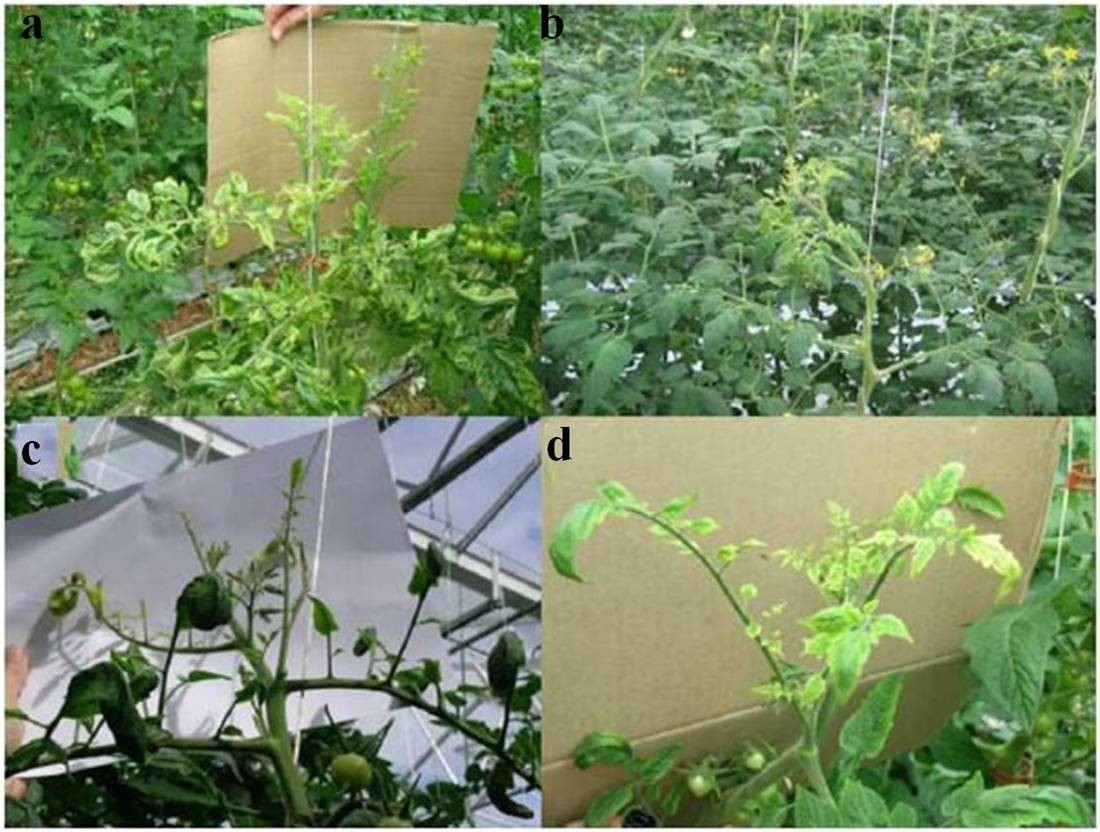
Fig.5. Shoots of psyllid yellows affected tomato plants infected with Ca. Liberibacter solanacearum. The images show stunting (a and b) and chlorosis of the apical growth (a, b, c, and d), which can be spiky (c). The leaflets on some affected shoots are also distorted and curled (a and c). Some varieties may have interveinal chlorosis and vein greening (d) (Photo courtesy: Dr. Lia Liefting)
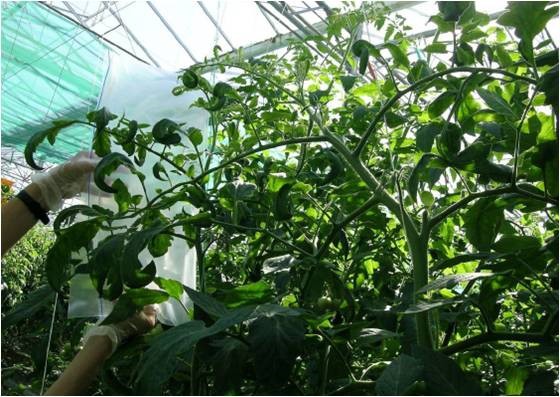
Fig.6. A psyllid yellows affected tomato plant infected with Ca. Liberibacter solanacearum. The image shows chlorotic and spiky apical growth and mottling and distortion and curling of the leaves (Photo courtesy: Dr. Lia Liefting).
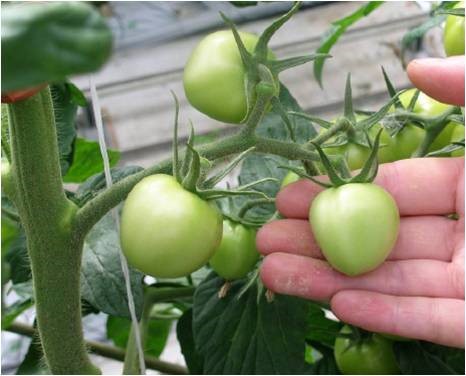
Fig.7. Fruit deformation of a psyllid yellows affected tomato plant that was also infected with Ca. Liberibacter solanacearum (Photo courtesy: Dr. Lia Liefting).
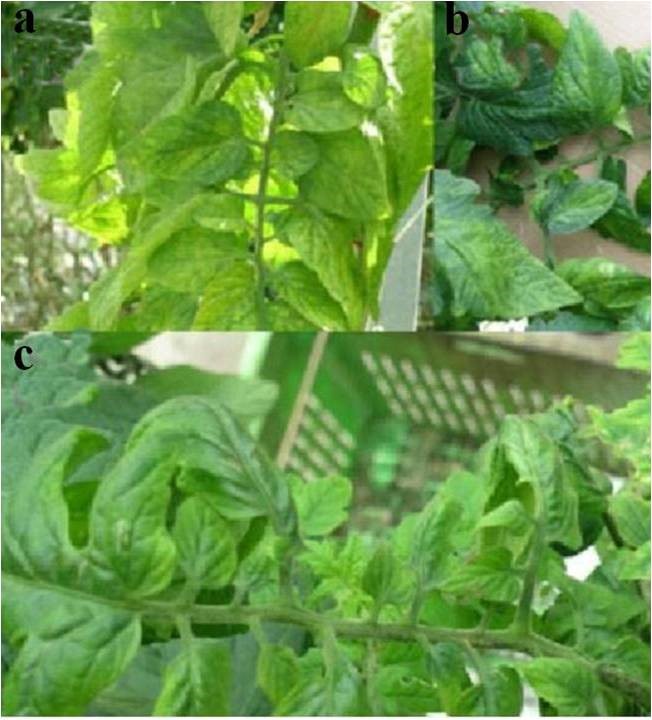
Fig.8. Leaves of psyllid yellows affected tomato plants infected with Ca. Liberibacter solanacearum. The images show chlorosis and mottling (a and b). The leaflets may also be distorted and curled (c) (Photo courtesy: Dr. Lia Liefting).
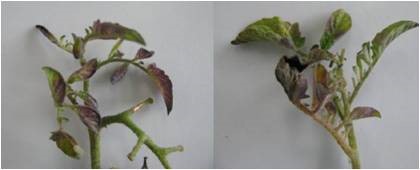
Fig.9. Shoot tip of psyllid yellows affected tomato plant infected with Ca. Liberibacter solanacearum showing purpling of the leaflets and petioles (Photo courtesy: Dr. Lia Liefting).
The potato/tomato psyllid, Bactericera cockerelli (Fig.10) is considered to be the causal vector of the Ca. liberibacter Solanacearum, in causing the Zebra chip and the psyllid yellows disease. The psyllid has 4 life stages (Fig. 10) and completes its development within one month. There are multiple psyllid species present in the state of Florida that look similar to the potato psyllid, thus identification of this vector can be difficult and should be confirmed by an expert.
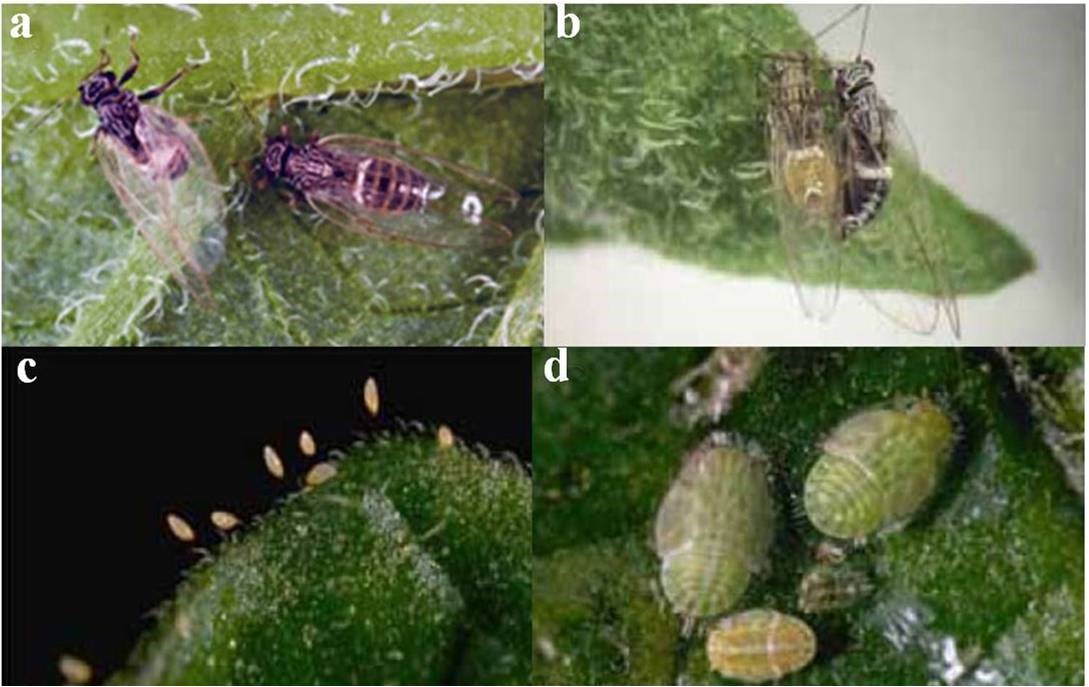
Fig.10. Potato/Tomato Psyllid vector. (a and b) adult psyllids, c) eggs (Photo courtesy: J. Kelly Clark), and d) nymph.
Researchers at the University of Florida, in co-operation with Department of Plant Industry, Florida Department of Agriculture and Consumer Service, will be conducting a survey for this important pathogen during the 2015 growing season. Since this pathogen has not been documented in Florida, the goal of this survey will be to make sure that tomato and potato production in the state is protected through routine monitoring of this pathogen and vector. Should you see something that is suspected to be this devastating disease in tomato or potato plants, contact your local extension office for further information.
- 2025 End-of-Season Florida Peanut Disease Notes - October 24, 2025
- Southern Rust Confirmed in the Florida Panhandle – June 2025 - June 6, 2025
- Stay Ahead of Disease with the Spore Report: A New Tool to Assist with Potato and Watermelon Management - April 11, 2025
